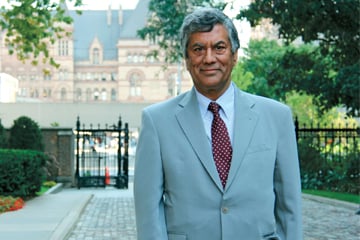
Human rights cases related to race possess unique challenges compared to other human rights claims, and often, few succeed, said a panel of lawyers in Toronto last month at the Roundtable of Diversity Association’s fourth annual conference in partnership with the Ontario Bar Association.

Very little social context analysis is given to human rights cases, an area of the law where it is arguably needed most, especially when it comes to cases around race discrimination, said Reem Bahdi, law professor at the University of Windsor, who also took part in the panel discussion.
“Race-based cases seem to get different treatment by courts and tribunals than other grounds of discrimination,” she said.
Raj Anand, a partner at WeirFoulds LLP in Toronto, who also spoke on the panel, said according to an article written 12 years ago, there had never been a race discrimination case under s. 15 of the Canadian Charter of Rights and Freedoms heard at the Supreme Court of Canada, and this still rings true today. The “jurisprudence on positive obligations” in this area of human rights law has been weak, he said.
There are “inherent difficulties” in proving racial discrimination human rights cases, which is why many don’t succeed. For example, in a research paper he wrote in 2002, Anand said s. 15 had differential application to groups protected by it — grounds on age, gender, sexual identity, race, etc. Yet, greater success has been achieved in cases on the grounds of religion, gender, disability and sexual orientation than racial equality, poverty and age.
Pinpointing a single, definite answer as to why this occurs is difficult, but a possibility could be due to the evolution of social concerns over time.
“The Canadian public has not evolved to the point where substandard equality is well-understood,” he said. “This is particularly so when different races or ethnic communities, economic groups or age groups are treated by government with facial equality, which generates divergent impact, because of their special needs.
It’s difficult to talk about racism and to acknowledge the existence of systemic racism, which is part of the reason why race-based human rights cases hardly succeed, Anand said.
An example he cited was the Working Together for Change: Strategies to Address Issues of Systemic Racism in the Legal Professions report from the Law Society of Ontario, in particular, its name. This report revealed systemic racism within the legal profession, but Anand said the report didn't reflect the fact “people are reluctant to conclude” the existence of systemic racism or to even complain their mistreatment has been a result of racism.
Often, these cases have an abundance of subjective evidence about the incident in question, which Anand said needs to be taken into account in court, but this could be interpreted in various ways, versus circumstantial evidence, which depends on deduction and inferences.
But, part of Bahdi’s research area, which focuses on Muslim and Arab claimant’s experiences with race discrimination in particular, highlights the fact that systemic racism and race discrimination does exist in Canadian society. She said it’s important that unconscious bias and racist views don’t continue to make their way through the courts.
Bahdi cited the case, Quebec (Commission des droits de la personne et des droits de la jeunesse) v. Bombardier Inc. (Bombardier Aerospace Training Center), 2015 SCC 39, [2015] 2 S.C.R. 789 as an example of alleged discrimination (although the appeal was ultimately dismissed). She said her plea is for people to read the tribunal decision and to “decide for yourself whether there was, in fact, no evidence [of race-based discrimination].”
“My own view, with respect to the Supreme Court, is that there was, in fact, fairly substantial evidence that should form a human rights framework,” said Bahdi. “Do the adjudicators recognize a stereotype when it's presented on the facts? For the most part, the answer is no.”
Editor's note: Law Society of Ontario report name corrected and comment by Raj Anand clarified Dec. 17, 2018.